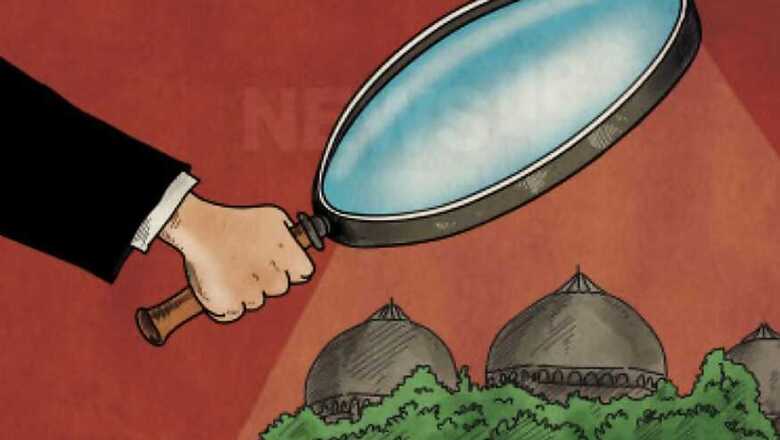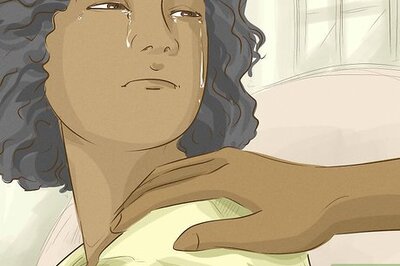
views
There is an interesting chapter in renowned Hindi author Kamleshwar’s book 'Kitne Pakistan' where Babur, the late Mogul empire founder, has been brought to a court of law for his testimony on Ayodhya dispute. Exhumed from his grave, Babur is apparently unhappy and looks tired. The chapter describes the dialogue between the Mughal emperor and the court thus:
The Court: You are the main culprit of this entire dispute... had you not destroyed the temple in Ayodhya, these issues would not have bothered the whole country.
Babur: I swear in the name of Allah, the almighty, that I did not destroy any temple. Nor did I ever build a mosque in my name. History is witness that Islam was present in this ‘mulk’ when I came to Hindustan. Ibrahim Lodi, who I defeated, was a Muslim. Was he not?
The Court: So what is the story behind demolition of Ram temple and Babri mosque then?
Babur: The capital of my empire was in Agra, which is in close proximity with Mathura, the birthplace of Hindu god Krishna. Now think, if I were to destroy a Hindu temple, would I not begin with Lord Krishna’s temple in Mathura? Why would I need to march more than a hundred miles to Ayodhya to destroy a temple in Lord Ram’s birthplace?
Court: But the chronicles before the court say you demolished the temple in 1528. You ordered your deputy Mir Baki to build a mosque there. Why are the pages of your diary missing from April 3, 1528 to September 17, 1528?
Babur: What can I tell you about the missing pages?
The Court: You must. Because it has been placed before the court that you were hunting in the upper grounds of Ayodhya on April 2. According to Baburnama, you were presiding your court in Agra on September 18, 1528. Where were you between these two dates? English gazetteer HR Neville mentions that in the summers on 1528 you reached Ayodhya, you stayed there for a week and ordered demolition of the ancient Ram temple and built a mosque there. It was named as Babari mosque.
Babur: This is a complete lie. For all these years in my grave, I have been watching what is happening in my country. Everything was fine till 1849 or 1850, but after the 1857 revolt, British rule changed its policies.
(Here, Anton Führer, late director of Archeological Survey of India who is also present in the court, pitches in.)
Anton Führer: He is correct. The British government changed its policies and it was decided to create a rift between the Hindu and the Muslim community, who revolted unitedly in 1857. It was under this policy, Ibrahim Lodi’s Inscription on Babari mosque was dismantled. My translation of that inscription was also in the files of Archeological Survey of India. No one thought to delete it. What they forgot to remove though, were the pages of Baburnama that provide the evidence that Babar went to Awadh but not Ayodhya ...and after that, the rulers and HR Neville at their behest prepared the Faizabad gazette and maliciously noted that Babur stayed in Ayodhya for one week and destroyed the Ram Mandir.
While this is how 'Kitne Pakistan' presents the Babri Masjid-Ram Temple dispute, historians are divided on the subject and offer divergent, often contrarian, views.
Professor Neetu Singh in her book 'Faizabad: Cultural Gazetteer', says after taking over the reins from Ibrahim Lodi, Babar moved to Gwalior campaign. He handed over the charge of Awadh to his deputy Mir Baki Tashkandi who, she claims, "built the mosque".
Eminent historian Irfan Habib in 'Medieval Ayodhya (Oudh), Down to the Mughal Occupation', writes: Babar did not enter Ayodhya the year when the mosque was built. “After his victory at Panipat, Babur began to take steps to bring the eastern provinces under his control and sent off his eldest son Humayun towards Jaunpur and Ghazipur. He appointed Shaikh Bayazid as governor of Awadh. However, Bayazid’s rebellious disposition invited the attention of Babur who encamped two or three kurohs (about 5-8 miles) from Awadh (Ayodhya) on 28 March 1528. His troops drove away Bayazid from the banks of Saru (Saryu) opposite Ayodhya. Babur does not mention his own entry into Ayodhya and though he remained in the vicinity, it is possible that he did not enter the town.”
Former IPS Kishore Kunal writes in his book 'Ayodhya Revisited' that in 1813 when the inscription at the mosque was tempered with, a narrative was building that Mir Baki built the mosque on Babur’s instruction. “Mandir was not destroyed in 1528 but it was demolished in 1660 by Fidayi Khan, who was the governor appointed by Aurangzeb."
KM Pandey, the District Judge of Faizabad in 1986, who ordered to open the locks of the disputed site, write in his book 'Voice of Conscience': "The inscriptions on the stones inside and outside the mandir proved that Babur visited the Ayodhya and demolished the mandir and constructed the mosque using the same material."
British author John Leyden, who translated 'The Memoirs of Babur', writes in his book 'Memoirs of Zehir-ed-din Muhammad Baber, Emperor of Hindustan, 1819': “Babur had encamped near Ayodhya on 28 March 1528.”
William Erskine in two volumes of his book, 'A History of India under the Two First Sovereigns of the House of Taimur, Baber, and Humayun, 1854', wrote, “Babur remained in Ayodhya for a fortnight and was involved in building activities.”
















Comments
0 comment